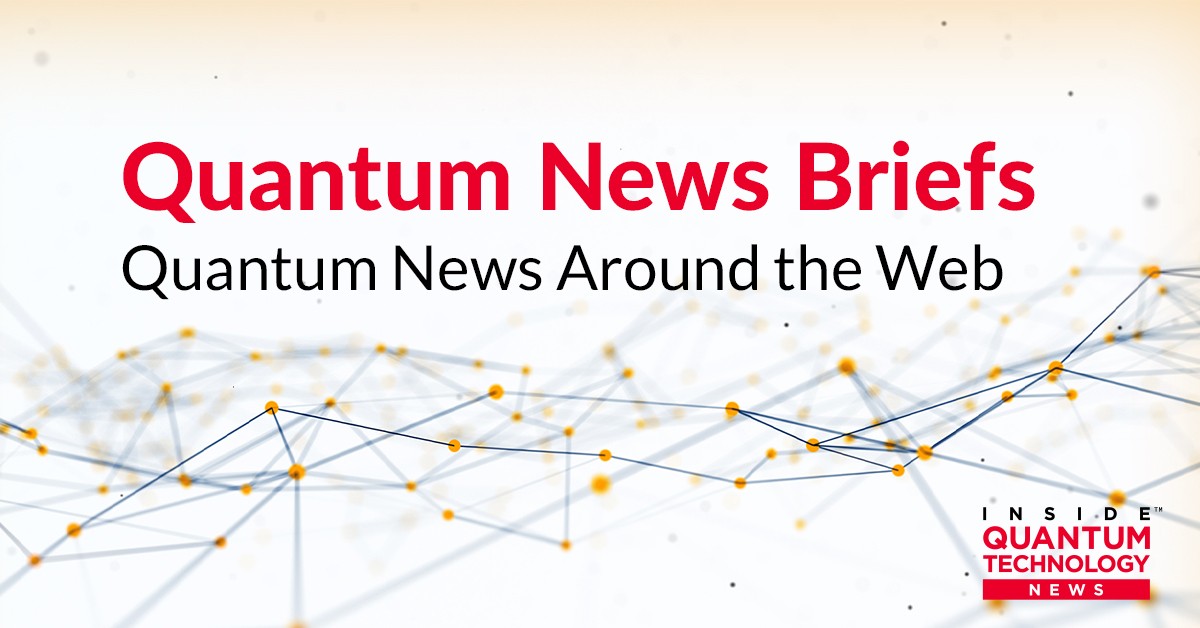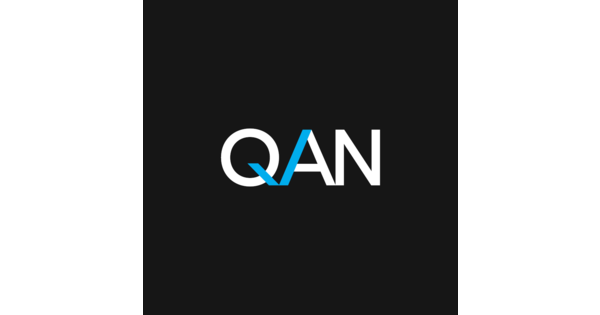
Quantum News Briefs: December 5, 2023:
QANplatform signs $15M VC deal for its quantum-resistant layer 1 blockchain

MBK Holding, a Qatar-based investment company with a UK subsidiary, has announced a significant $15 million investment in QANplatform, a pioneering blockchain platform. This announcement was made at the Qatar Science & Technology Park, highlighting MBK Holding’s commitment to technology-focused ventures. The collaboration is set to facilitate QANplatform’s global market expansion, particularly in the Middle East and the UK. QANplatform distinguishes itself as a unique Layer 1 blockchain platform, notable for its quantum-resistant features and compatibility with Ethereum’s EVM, allowing developers to code in any programming language. This versatility is expected to broaden the pool of developers engaging with blockchain technology dramatically. The partnership with MBK Holding, led by H.E. Sheikh Mansoor Bin Khalifa Al-Thani, aims to leverage the platform’s innovative capabilities, including multi-language smart contracts and robust security, to revolutionize various industries and value chains. This strategic alliance is poised to position the platform at the forefront of blockchain innovation, potentially transforming sectors such as finance, healthcare, and eSports, as evidenced by their growing ecosystem and partnerships with companies like Alpine Esports.
QuEra and LINKS Foundation Partner to Drive Algorithm Development and Expand Use of Neutral Atom-Based Quantum Computing

Recently, QuEra Computing, a leader in neutral-atom quantum computing, and the LINKS Foundation, a center for algorithm development and research-to-market integration, announced a partnership. This collaboration is set to enhance access to QuEra’s advanced quantum computing resources. The partnership combines QuEra’s expertise in neutral atom-based quantum computers with LINKS Foundation’s proficiency in algorithm development, aiming to boost the adoption of quantum computing in Europe and globally. Key focus areas include optimization, machine learning, and simulation. QuEra’s Aquila-class quantum computers, unique 256-qubit devices featuring advanced technology like FPQA™ and Bloqade™, have been publicly available since November 2022. Yuval Boger of QuEra emphasized the significance of this partnership in expanding their European presence, while Olivier Terzo of LINKS Foundation highlighted the collaborative benefits in enhancing their algorithm development capabilities and market impact.
Argonne National Laboratory, University of Chicago, and Stanford Researchers all Charge qubits get a thousand-fold boost

US researchers, led by Dafei Jin of the Argonne Center for Nanoscale Materials and David Schuster of Stanford University and the University of Chicago, have significantly enhanced the coherence time of charge quantum bits (qubits) by a factor of 1000, using improved materials in their construction. This breakthrough, detailed in a Nature Physics paper, also achieved a remarkable 98.1% fidelity in qubit state readout without specialized amplifiers, a figure expected to increase with more advanced technologies. Charge qubits, which encode quantum information through the presence or absence of charge on an electron, offer faster operation speeds and are easier to fabricate than spin qubits. The team’s success is attributed to creating these qubits in an ultra-clean environment, using solid neon surfaces in a vacuum, which minimizes noise and enhances coherence time from the typical 100 nanoseconds to 100 microseconds. Looking ahead, Jin anticipates further advancements, including extending coherence time to 1-10 milliseconds and achieving entanglement of two charge qubits, paving the way for universal quantum computing.
In Other News: CBS News article: “60 MINUTES OVERTIME-Quantum computers could solve problems in minutes that would take today’s supercomputers millions of years”

A recent CBS News 60 Minutes segment highlighted that quantum computing, representing a significant leap over traditional transistor-based computers, is rapidly advancing towards solving complex problems currently beyond the reach of today’s supercomputers. As explained by IBM’s Dario Gil and others, this emerging technology operates on the principles of quantum mechanics using qubits, which can exist in multiple states simultaneously, unlike traditional bits that are either zero or one. This allows quantum computers to process vast amounts of data at unprecedented speeds, opening new possibilities in fields like physics, chemistry, engineering, and medicine and even breaking current encryption codes. Companies like Google and nations like China and the U.S. heavily invest in this technology. Google’s quantum lab showcases a processor in one of the universe’s coldest environments to optimize qubit performance. The race to develop efficient quantum computers is intense, as they have the potential to revolutionize healthcare by modeling complex protein behaviors and impacting the global economy. Despite challenges like maintaining qubit coherence and reducing computational errors, industry leaders like Hartmut Neven of Google and IBM’s Gil are optimistic about overcoming these hurdles, foreseeing significant advancements and practical applications by the decade’s end. IBM‘s upcoming Quantum System Two, boasting three times the qubits of its predecessor, exemplifies the rapid progress in this field.
In Other News: The Debrief article: Quantum 2.0: Discovering the Next Generation of Quantum Technology.”

A recent Debrief article focused on how quantum computing, tracing its conceptual roots back to ancient Greek philosophers who observed magnetism in lodestones, is undergoing a transformative era. Modern advancements in manipulating quantum materials at the atomic level propel significant progress in diverse fields like energy transport, medical sensing, and information processing. Quantum mechanics, established in the early 20th century, underpins the unique properties of these materials, such as superposition and entanglement. This technology, integral to everyday devices like MRI scanners and digital displays, is poised to revolutionize areas like quantum computing. Despite challenges in maintaining quantum states and scaling, the potential of quantum computing is immense, promising to outperform classical computers in complex tasks like financial modeling and drug discovery. The future of quantum technology, aligning with goals of clean growth and a net-zero carbon footprint, hinges on a deeper understanding of quantum materials at the atomic scale, as demonstrated by facilities like the ISIS Neutron and Muon Source.
Kenna Hughes-Castleberry is the Managing Editor at Inside Quantum Technology and the Science Communicator at JILA (a partnership between the University of Colorado Boulder and NIST). Her writing beats include deep tech, quantum computing, and AI. Her work has been featured in Scientific American, Discover Magazine, New Scientist, Ars Technica, and more.
- SEO Powered Content & PR Distribution. Get Amplified Today.
- PlatoData.Network Vertical Generative Ai. Empower Yourself. Access Here.
- PlatoAiStream. Web3 Intelligence. Knowledge Amplified. Access Here.
- PlatoESG. Carbon, CleanTech, Energy, Environment, Solar, Waste Management. Access Here.
- PlatoHealth. Biotech and Clinical Trials Intelligence. Access Here.
- Source: https://www.insidequantumtechnology.com/news-archive/quantum-news-briefs-december-5-2023-quera-and-links-foundation-partner-to-drive-algorithm-development-argonne-national-laboratory-university-of-chicago-and-stanford-researchers-all-charge-qubit/



